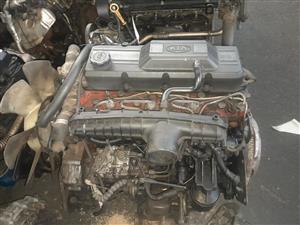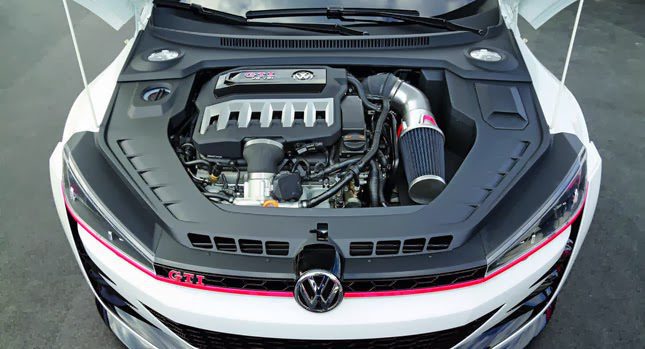Inexpensive Opel Corsa Engine Options for Your Budget plan
Wiki Article
Effective and Powerful Tiny Vehicle Motor Performance Evaluation
Assessing the efficiency of tiny car electric motors is a nuanced task that needs an eager eye for detail and a deep understanding of automotive engineering principles. By examining vital metrics such as horsepower and torque, as well as evaluating gas effectiveness, we can discover understandings right into just how small auto engines can be maximized for peak performance.
Tiny Auto Electric Motor Performance Metrics
In analyzing the performance of small car motors, crucial metrics such as velocity, fuel effectiveness, and power outcome play a vital duty in establishing their total performance and suitability for different driving conditions. Velocity, measured in seconds from 0 to 60 miles per hour, suggests just how swiftly a little auto can get to higher rates, which is necessary for merging onto freeways or overtaking various other cars. Gas efficiency, normally measured in miles per gallon (MPG), shows how much a small auto can take a trip on a gallon of fuel, impacting running prices and ecological sustainability. Power outcome, expressed in horsepower (HP) or kilowatts (kW), symbolizes the engine's capability to create the necessary pressure to propel the car, influencing its performance in different roadway problems. By reviewing these efficiency metrics comprehensively, suppliers, drivers, and vehicle lovers can make educated decisions pertaining to the choice and optimization of small vehicle motors to fulfill their specific needs and preferences.
Horsepower and Torque Analysis
With an essential duty in understanding little auto motor performance, horse power and torque evaluation provides insight into the engine's power shipment characteristics. Horsepower is a dimension of the engine's capability to do work over time, standing for the rate at which work is done. In the context of tiny auto motors, horsepower is essential for figuring out acceleration, full throttle, and general efficiency. Torque, on the other hand, measures the engine's rotational force, showing its capability to overcome resistance. Little auto engines with higher torque values usually really feel much more responsive and offer much better acceleration, making them ideal for city driving and overtaking maneuvers. When examining horsepower and torque in small cars and truck electric motors, it is important to consider just how these metrics engage to deliver a effective and balanced driving experience. By recognizing the relationship in between horse power and torque, auto engineers can optimize engine efficiency to fulfill the certain needs of little vehicle applications.Gas Efficiency Assessment
The analysis of fuel performance in small vehicle electric motors plays a vital duty in determining their economic and ecological effect. In little automobile motors, where portable dimension typically associates with better gas economy, different variables affect efficiency.To evaluate gas efficiency, metrics such as miles per gallon (MPG) are frequently used. This dimension suggests the distance a car can travel per unit of gas. Small vehicle motors that accomplish higher MPG scores are taken into consideration more fuel-efficient, resulting in cost financial savings for vehicle drivers and decreased discharges that profit the atmosphere. Makers continuously make every effort to enhance gas performance via developments in engine innovation, light-weight materials, and wind resistant designs.

Enhancing Little Automobile Engine Efficiency
Enhancing the performance of little car engines is vital in optimizing performance and lessening functional prices. Optimizing tiny automobile engine efficiency includes an all natural approach that thinks about different aspects such as engine style, gas management systems, and total automobile characteristics. One vital facet of enhancing engine performance is making sure appropriate maintenance routines are adhered to, consisting of routine oil adjustments, filter substitutes, and ignition system evaluations. Furthermore, adjusting the engine to run at its peak performance can substantially improve overall performance.Another critical variable in enhancing little vehicle engine performance is the use of innovative modern technologies such as turbocharging or hybrid systems. These technologies can enhance power result without compromising fuel efficiency, providing a balance in between efficiency and economy. Enhancing engine efficiency additionally entails improving combustion efficiency, reducing frictional losses, and enhancing thermal administration systems.
Future Trends in Small Car Motors
Due to advancing vehicle innovations and the continual pursuit of optimal small cars and truck engine efficiency, an expedition of future fads in small vehicle motors ends up being critical - opel corsa engine. One noticeable pattern on the perspective is the raising assimilation of electric powertrains in little vehicles. As the vehicle market changes in the direction of sustainability and minimized emissions, even more tiny automobile suppliers are buying electric motor technology to boost performance and ecological kindnessOne more significant pattern is the growth of smaller yet a lot more powerful turbocharged engines for tiny automobiles. By scaling down engine capabilities and including turbocharging modern technology, automakers can achieve higher power results while keeping fuel effectiveness. This pattern straightens with the growing consumer need for little cars that supply a dynamic driving experience without compromising on fuel economic climate.
Additionally, the emergence of hybrid powertrains in tiny autos is expected to acquire traction in the future. Hybrid systems supply the benefits of both interior combustion engines and electrical motors, supplying enhanced efficiency and fuel effectiveness. As improvements in battery modern technology proceed, small auto motors are likely to become even a lot more efficient and powerful, dealing with the progressing demands of customers and regulative needs for cleaner transportation services.
Final Thought
To informative post conclude, the evaluation of tiny cars and truck electric motor efficiency metrics such as torque, fuel, and horse power performance is vital in maximizing engine efficiency. By evaluating these aspects, manufacturers can improve the total efficiency and power outcome of small car electric motors (opel corsa engine). Future fads in small auto electric motors are likely to focus on boosting performance while preserving fuel efficiency, ensuring that tiny autos continue to be a cost-effective and trustworthy selection for customersBy examining key metrics such as horse power i was reading this and torque, as well as reviewing fuel effectiveness, we can uncover understandings into exactly how tiny auto engines can be enhanced for peak efficiency. Enhancing small car engine efficiency entails a holistic technique that takes into consideration different variables such as engine style, fuel management systems, and general car dynamics.In light of advancing automotive innovations and the constant pursuit of optimal little auto engine performance, an exploration of future patterns in small cars and truck electric motors comes to be critical.In conclusion, the evaluation of tiny cars and truck electric motor efficiency metrics such as fuel, torque, and horse power effectiveness is vital in maximizing engine performance. Future fads in little automobile motors are most likely to concentrate on improving learn the facts here now performance while maintaining fuel efficiency, guaranteeing that little automobiles continue to be a affordable and reputable option for customers.
Report this wiki page